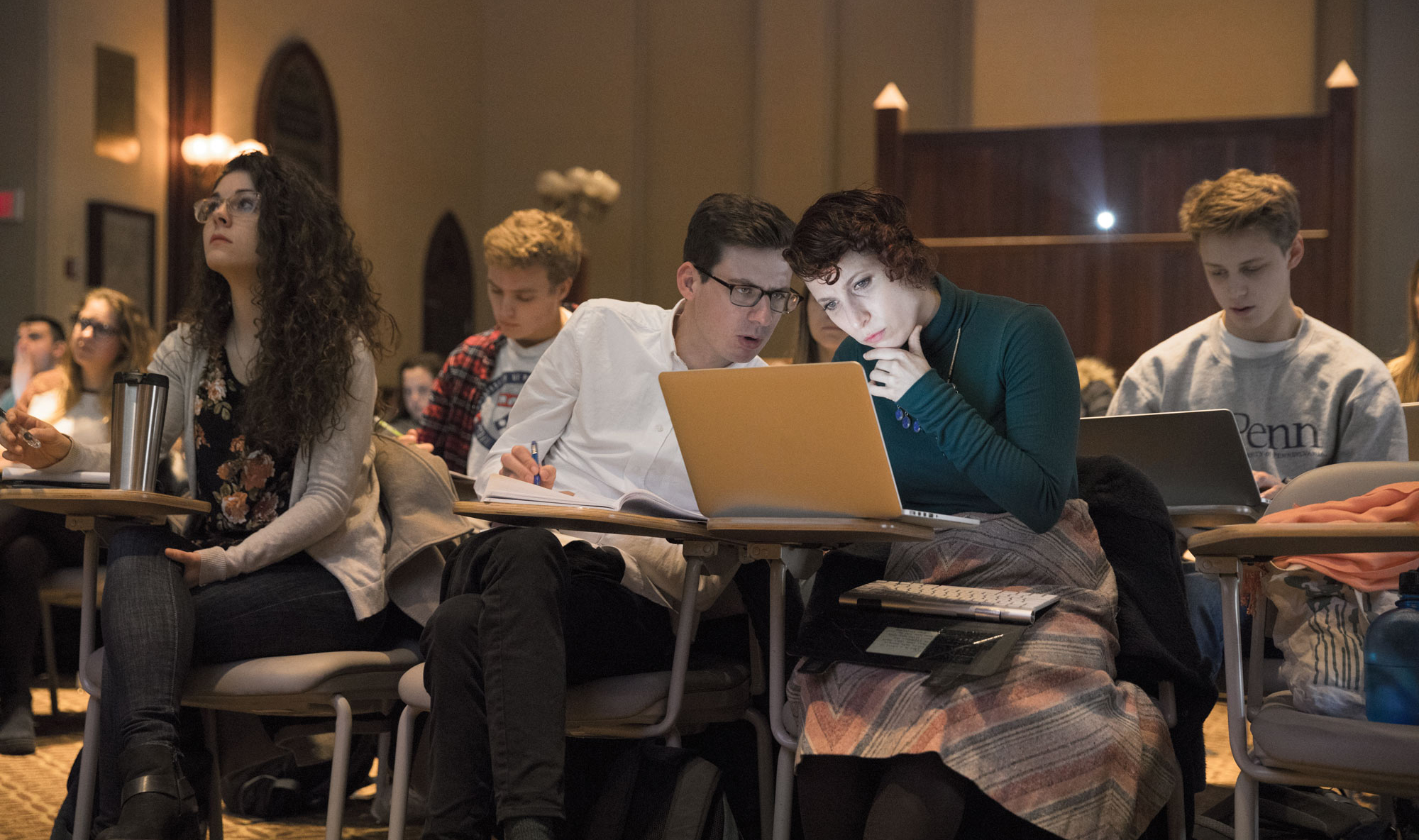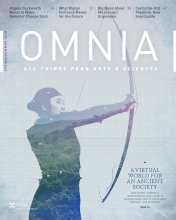Popular accounts of history—the kinds taught in grade school or those that inform a cultural mythos—often produce simple, black and white narratives. In the Deciphering America: Telling Moments in American History course, things aren’t so simple.
“It’s history for grownups,” says Kathleen Brown, David Boies Professor of History. “And being a grownup means that you can carry dissonant thoughts with you.”
The course, originally taught by Brown and Walter Licht, Walter H. Annenberg Professor of History, covers 13 moments in American history, from Plymouth Plantation to the Cold War and Black Lives Matter. This semester, Brown is teaching alongside Danielle Holtz, GR’17, Lecturer in the Department of History, and teaching assistants Anna Todd, GR’21, and Gabriel Raeburn, GR’20.
In lectures and recitations, students go deep on these 13 moments. Aided by primary sources including newspaper articles, paintings, and government documents, as well as scholarly articles, students analyze these small slices of the past.
“We made the decision that students will have a lot of information at their fingertips,” explains Brown. “We’re aiming for them to ask questions about representations and invocations of the past. We take what may be familiar and defamiliarize it a bit.”
Benjy Zhang, C’21, says the pace of the course is manageable because of how the lectures, recitations, and readings complement each other. “The lectures lay the groundwork and in the readings, you delve deeper,” he says. Rémi Cordelle, C’19, adds that “the structure really works. We discuss the lecture and readings in recitation and it helps you see things you missed.”
Students practice analytical skills in weekly journal entries, written in response to a visual or textual prompt. Students respond to each prompt twice: at the start of the week and again at the end, after attending the lectures and recitations.
Holtz sees a remarkable difference in the end-of-week entries. “Once you give students a sense of the players involved, language that was impenetrable comes to life. When they go back to the source, suddenly the stakes are clear or they see things like satire or humor that they didn’t catch the first time around.”
Todd says that the journal entries are powerful for both students and instructors: “Seeing the light bulbs come on when I'm asking students to reinterpret the prompt from their initial impressions has been an exciting experience.” Raeburn agrees, saying, “Interpreting documents moves students away from thinking about history as memorizing facts.”
Hillary Aristotle, C’21, appreciates the journals because they help her work through information as she’s learning it. “In high school, history assignments were big papers once or twice a semester. With the journals, I’m writing every week and making sure I understand.”
Brown and Holtz want students to come away with a set of skills—the ability to read a text or look at an image and place it in context, think about intentions and consequences, and recognize complexities.
“We want students to think critically about history and about today,” Holtz says. “They can apply these skills to anything they encounter.”
"Washington at Princeton"
Early in the course, students wrote journal entries responding to Charles Willson Peale’s painting “Washington at Princeton.” Students analyzed the military portrait of Washington wearing powdered hair, breeches, a navy and gold coat with epaulets, and a light blue sash across his vest. He leans against a cannon with a horse, solider, and flag immediately behind him. In class, Kathleen Brown, David Boies Professor of History, showed "Washington at Princeton" on the projector.
A student raised her hand. “Is that the same as from the prompt?” she asked.
“You’re going to have to work on that this week,” Brown replied.
It wasn’t quite the same—the sash had been painted out. But why? Brown explains:
“In 1775, Washington was a new general. He was horrified that members of the continental army weren’t deferential to their officers. They didn’t recognize hierarchies. So, he instituted a system of sashes. He wore blue, other officers wore red, yellow, orange. Around 1779, Washington decided sashes smacked too much of aristocracy and distinction. We don’t know when, but at some point the sash was painted out of this portrait.
“The portrait begins to demonstrate Washington’s complex relationship with democracy. He was a military leader interested in hierarchy and taking Indian lands as soon as he could get hold of them. He was a slave owner. He distrusted working-class people and worried about democracy becoming too popular. But, when he had an absolutely clear path to continued political power, he stepped away. And he was reputed to be scrupulously honest. I want students to come out thinking, ‘All these things are true about him.’”






